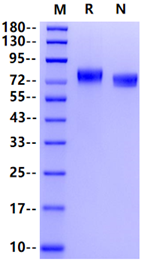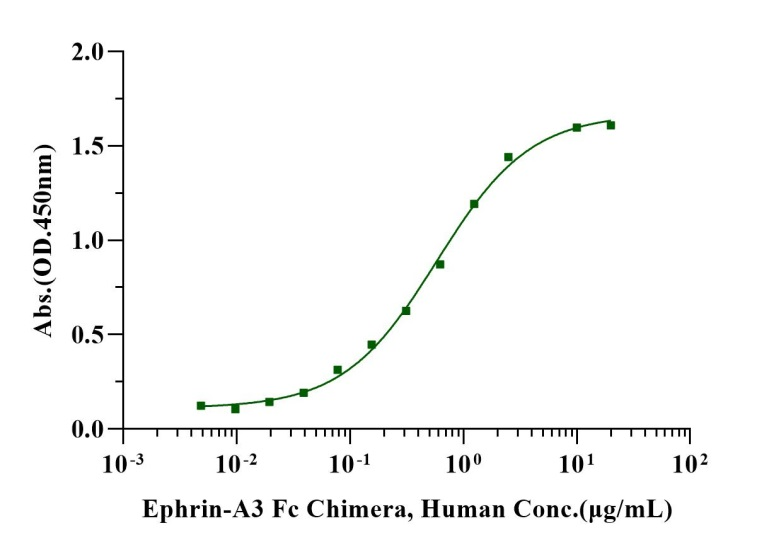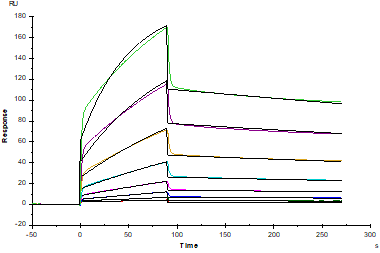Pro25-Pro573, with C-terminal 10*His PASLAGCYSAPRRAPLWTCLLLCAALRTLLASPSNEVNLLDSRTVMGDLGWIAFPKNGWEEIGEVDENYAPIHTYQVCKVMEQNQNNWLLTSWISNEGASRIFIELKFTLRDCNSLPGGLGTCKETFNMYYFESDDQNGRNIKENQYIKIDTIAADESFTELDLGDRVMKLNTEVRDVGPLSKKGFYLAFQDVGACIALVSVRVYYKKCPSVVRHLAVFPDTITGADSSQLLEVSGSCVNHSVTDEPPKMHCSAEGEWLVPIGKCMCKAGYEEKNGTCQVCRPGFFKASPHIQSCGKCPPHSYTHEEASTSCVCEKDYFRRESDPPTMACTRPPSAPRNAISNVNETSVFLEWIPPADTGGRKDVSYYIACKKCNSHAGVCEECGGHVRYLPRQSGLKNTSVMMVDLLAHTNYTFEIEAVNGVSDLSPGARQYVSVNVTTNQAAPSPVTNVKKGKIAKNSISLSWQEPDRPNGIILEYEIKYFEKDQETSYTIIKSKETTITAEGLKPASVYVFQIRARTAAGYGVFSRRFEFETTPVFAASSDQSQIPGGGSGGGSHHHHHHHHHH
1. CHENGYING LIU, YAN HE, XIAO FENG, et al. Expression of EPHA5 in lung adenocarcinoma is associated with lymph node metastasis and EGFR mutation[J]. 2022,130(6):338-345.
EPHA5 is a member of the Eph family of tyrosine kinase receptors, which affect carcinogenesis. High expression of EPHA5 was found in NCI‐H460 and H1299 cells, while low expression was observed in A549 and SPC‐A1 cells. EPHA5 was knocked down in NCI‐H460 and H1299 lung cancer cell lines using siRNAs. EPHA5 receptor is differently expressed in lung adenocarcinoma tissues, in which positive and negative expression of EPHA5 was found in 58.1% and 41.9% of tissues, respectively.EPHA5 receptor plays a role in tumor promotion in lung adenocarcinoma and it is a potential target for lung adenocarcinoma treatment.

2μg (R: reducing conditions, N: non-reducing conditions).

Immobilized EphA5 His Tag, Human (Cat. No. UA010566) at 2.0μg/mL (100μL/well) can bind Ephrin-A3 Fc Chimera, Human (Cat. No. UA010141) with EC50 of 0.50-0.68μg/mL .

Protein A Chip captured Ephrin-A3 Fc Chimera, Human (Cat. No. UA010141), can bind EphA5 His Tag, Human (Cat. No. UA010566) with an affinity constant of 19.49 nM as determined in SPR assay.